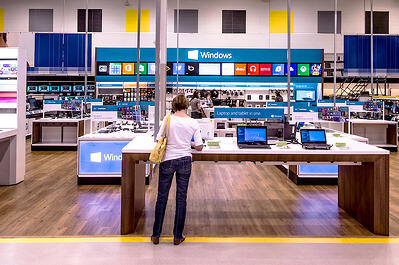
Your business may be doing fine. Sales are solid and staffing is consistent but isn't there something more that you can do? Retail business intelligence has grown by leaps and bounds in the last decade and if your business is still operating on 20th century technology, you're leaving money on the table. These three retail business intelligence tools can increase profits, cut down on waste, and promote productivity even during slow periods.
Automated Time and Attendance
Nearly every business sector grapples with the potential income lost to personnel issues. Excessive absenteeism, late starts and early leaves, and employee turnover heavily affect a retail business' bottom line in the form of decreased sales and inadequate customer service. Many businesses suffer from these staffing issues without even knowing that they're occurring.
A study performed by the Aberdeen Group found that companies that utilized automated time and attendance systems report a 12 percent increase in workforce capacity. Employees who are held to a higher standard of time and attendance show a more active interest in complying with company guidelines. Automated time and attendance reports can also cut down on the 2.2 percent of payroll expenses lost to "buddy punching" or employees punching in co-workers to avoid tardiness. Simple biometrics and clock codes for automated time and attendance are one of the business intelligence tools that businesses can use to increase their productivity and decrease payroll expenses.
Merchandise Management Systems
The retail sector faces particular challenges with maintaining inventory. A lot can change depending on season, time, and exposure. While stores can anticipate bulking up on inventory during the holidays, pinpointing a sudden trend due to celebrity endorsement or local interest can be a little more difficult. Merchandise management systems are a retail business intelligence tool that can help retail businesses reduce waste while optimizing sales. Using a retail management system to provide minute-by-minute tracking of available inventory provides managers with key information to adequately stock their store.
This retail business intelligence tool is particularly useful for businesses with multiple sites. While a brand may be flying off the shelves in one location, they can be lingering in another. Merchandise management systems are one of the retail business intelligence tools that businesses can use to identify the best use of their inventory dollars, ensuring that businesses don't end up with inventory rotting or flying off the shelves.
Scheduling Software
Anyone with management experience will tell you that the hardest part of a retail sector is scheduling employees. Often, the same spreadsheets and "gut feeling" that was used fifty years ago is still being used today. Some managers excel at understanding when and how to staff but none are perfect. Regardless of experience or skill, relying on old-school scheduling will result in some waste through over or under scheduling.
Scheduling software uses the science behind scheduling by looking at a store's productivity and staffing accordingly. Historical evidence drives scheduling software to ensure that customers receive adequate attention during peak times and the company isn't overstaffed during slow times. Scheduling software is a retail business intelligence tool that retail businesses can't afford to pass up on when expanding their automated processes.
Retail business intelligence is moving quickly. While many systems are superfluous, retailers that pass up on scheduling software, merchandise management systems, and automated time and attendance are losing money without even realizing it. By implementing some simple changes, retailers can create a lean workforce and inventory system with very little pain felt on the front lines. Before delving into more involved and complicated retail business intelligence systems, make sure you implement these three first.
